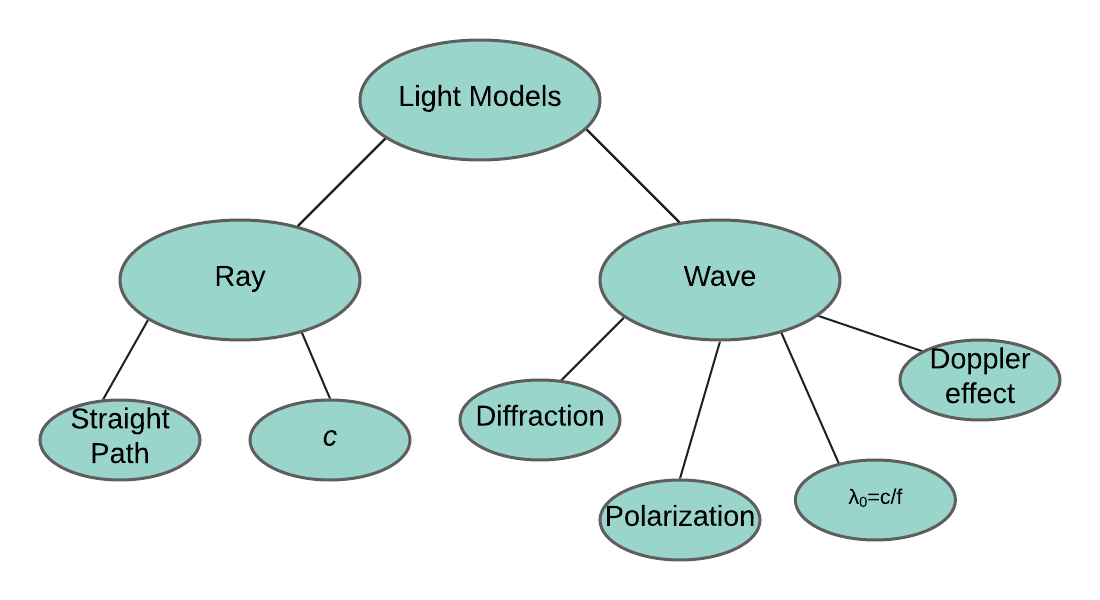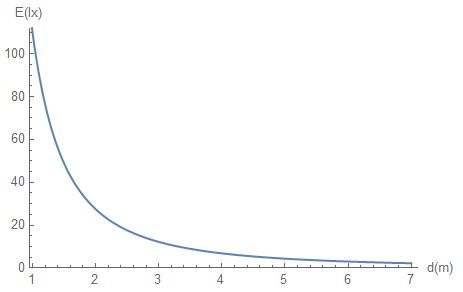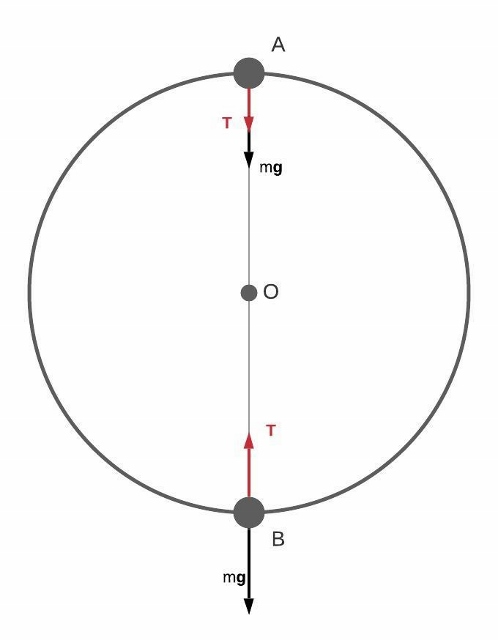All Solutions
Page 452: Assessment

However, the illuminated source is for example the Moon. It does not emit light but reflects the light from the Sun. So, we can say that the illuminated source is the source that reflects the light from the luminous source. We can see that light travels through a vacuum with sunlight because there is a vacuum in space.
The filament
is luminous; the frosted glass is illuminated.
You barely can see the hot
filament through the frosted glass.
textit{color{#c34632} $See$ $Explanation$}
$$
When this reflected light reaches our eyes, we see them.
through which light can pass without
distortion.
A translucent object allows
light to pass but distorts the light to the
point where images are not discernable.
An opaque object does not allow light
to pass through.
textit{color{#c34632} $See$ $Explanation$}
$$
Also, from everyday experience, we know that when we use a brighter lightbulb, the illumination of a surface is greater. And, when the lightbulb is less bright, the illumination of a surface is lesser. This brightness of a lightbulb is proportional to the luminous flux. So, we can conclude that the illumination of a surface is directly proportional to the luminous flux.
We can see these properties in equation $E= frac{P}{4 pi r^2}$ where $E$ is the illumination, $P$ is the luminous flux, and $r$ is the distance between the light source and the surface.
lambda_{text{visible light}} in (4.00 cdot 10^{-7} hspace{0.5mm} mathrm{m}, 7.00 cdot 10^{-7} hspace{0.5mm} mathrm{m})
$$
colors, or at least the primary colors.
textit{color{#c34632} $See$ $Explanation$}
$$
Longitudinal waves cannot be plane polarised because the direction of vibration and direction of propagation are the same.
1) Transverse waves – medium moves perpendicular to the direction of the wave. (Example: Light waves)
2) Longitudinal waves – medium moves parallel to the direction of the wave. (Example: Sound waves)
In longitudinal waves the displacement of the particles is always in the direction of propagation so because of that they can not be polarized.
For the blue shift. the galaxy is going toward to Earth.
color{#c34632}c = lambda f implies lambda = dfrac{c}{f}
$$
$c$ is a universal constant, therefore as $f$ increase $lambda$ decreases
text{color{#4257b2}As frequency increases wavelength of light decreases }
$$
$$c=fcdot lambdatag1$$
We can express the wavelength from it:
$$lambda=frac{c}{f}tag2$$
Keep in mind that the $c$ is a constant value, the speed of light. From here we see that if the frequency increases the wavelength will decrease in it’s value.
$$
begin{align*}
E_{A}&=frac{P}{4 pi r_{A}^{2}}\
E_{B}&=frac{P}{4 pi r_{B}^{2}}\
frac{E_{B}}{E_{A}}&= frac{ frac{P}{4 pi r_{B}^{2}}}{ frac{P}{4 pi r_{A}^{2}}}\
frac{E_{B}}{E_{A}}&= frac{ r_{A}^{2}}{ r_{B}^{2}}\
frac{E_{B}}{E_{A}}&=left ( frac{ 2.0 hspace{0.5mm} mathrm{m}}{4.0 hspace{0.5mm} mathrm{m}}right)^2\
frac{E_{B}}{E_{A}}&=left( frac{1}{2} right)^2\
frac{E_{B}}{E_{A}}&= frac{1}{4} \
E_{B}&= frac{E_{A}}{4}
end{align*}
$$
The illuminance at Screen B is four times smaller than the illuminance at Screen A.
$a)$ So, the illuminance in the book is not the same.
$b)$ We have already concluded that the illuminance would be lesser. If the initial distance was $r_{before}= 35 hspace{0.5mm} mathrm{cm}$, then the initial illuminance was $E_{before}= frac{P}{4 pi r_{before}^{2}}$ When the distance was doubled, $r_{after} = 2 r_{before} Rightarrow r_{after}=70 hspace{0.5mm} mathrm{cm}$ then the illuminance was $E_{after}= frac{P}{4 pi r_{after}^{2}}$ The luminous flux is the same because it is the same source of light. So, we can write
$$
begin{align*}
E_{before}&=frac{P}{4 pi r_{before}^{2}}\
E_{after}&=frac{P}{4 pi r_{after}^{2}}\
frac{E_{before}}{E_{after}}&= frac{ frac{P}{4 pi r_{before}^{2}}}{ frac{P}{4 pi r_{after}^{2}}}\
frac{E_{before}}{E_{after}}&= frac{ r_{after}^{2}}{ r_{before}^{2}}\
frac{E_{before}}{E_{after}}&= ( frac{2r_{before}}{r_{before}})^{2}\
frac{E_{before}}{E_{after}}&= 2^2\
frac{E_{before}}{E_{after}}&=4\
E_{after}&= frac{E_{before}}{4}
end{align*}
$$
When we doubled the distance, the illuminance was four times lesser than before.
black does not reflect any light, and
thus there is no interference while
observing or photographing objects.
textit{color{#c34632} $See$ $Explanation$}
$$
$a)$ The red cellophane reflects red light and absorbs the remaining primary colors, blue and green. This is why we see cellophane as red.
$b)$ In this case, we use cellophane as a filter for a red light. The white light is a mix of all primary colors, red, blue, and green. When we light the red cellophane with white light, it only transmits red light.
$c)$ As we said in previous parts, some colors are absorbed. In this case, the red cellophane absorbs the blue and green light.
$b)$ The red cellophane only transmits red light.
$c)$ The red cellophane absorbs the blue and green light.
begin{align*}
lambda_{obs}- lambda &=- frac{v}{c} lambda \
frac{v}{c} &= 1- frac{ lambda_{obs}}{ lambda} \
v &= c left(1- frac{ lambda_{obs}}{ lambda}right) \
v &= 3 cdot 10^{8} hspace{0.5mm} mathrm{frac{m}{s}} left(1- frac{ 545 hspace{0.5mm} mathrm{nm} }{ 645 hspace{0.5mm} mathrm{nm}}right) \
v &= 0.465 cdot 10^{8} hspace{0.5mm} mathrm{frac{m}{s}}\
v &= 46.5 cdot 10^{6} hspace{0.5mm} mathrm{frac{m}{s}}
end{align*}
For red light to appear green, the speed of the car should be [ framebox[1.1width]{$ therefore v = 46.5 cdot 10^{6} hspace{0.5mm} mathrm{frac{m}{s}} $}]
v = 46.5 cdot 10^{6} hspace{0.5mm} mathrm{frac{m}{s}}
$$
begin{align*}
E&=frac{P}{4 pi r^{2}}\
E&=frac{405 hspace{0.5mm} mathrm{lm}}{4 pi (4.0 hspace{0.5mm} mathrm{m})^{2}}\
E&=frac{405 hspace{0.5mm} mathrm{lm}}{4 pi 16.0 hspace{0.5mm} mathrm{m}^{2}}\
E&=2.01 hspace{0.5mm} mathrm{lx}
end{align*}
The illumination is [ framebox[1.1width]{$ therefore E=2.0 hspace{0.5mm} mathrm{lx} $}]
E=2.0 hspace{0.5mm} mathrm{lx}
$$
begin{align*}
d&=c hspace{0.5mm} t\
d&=3 cdot 10^{8} hspace{0.5mm} mathrm{frac{m}{s}} cdot 1.28 hspace{0.5mm} mathrm{s}\
d&=3.84 cdot 10^{8} hspace{0.5mm} mathrm{m}\
d&=3.84 cdot 10^{5} hspace{0.5mm} mathrm{km}\
end{align*}
The distance between the Moon and Earth is [ framebox[1.1width]{$ therefore d=3.84 cdot 10^{5} hspace{0.5mm} mathrm{km} $}]
d=3.84 cdot 10^{5} hspace{0.5mm} mathrm{km}
$$
begin{align*}
E&=frac{P}{4 pi r^{2}}\
P&=4 pi hspace{0.5mm} E hspace{0.5mm} r^{2}\
P&=4 pi cdot 175 hspace{0.5mm} mathrm{lx} cdot (0.8 hspace{0.5mm} mathrm{m})^{2}\
P&=4 pi cdot 175 hspace{0.5mm} mathrm{lx} cdot 0.64 hspace{0.5mm} mathrm{m}^{2}\
P&=1407.43 hspace{0.5mm} mathrm{lm}\
end{align*}
So, we will need the closest upper value of the luminous flux, and that is $P_{2}=1620 hspace{0.5mm} mathrm{lm}$. The minimum setting are going to be [ framebox[1.1width]{$ therefore P=1620 hspace{0.5mm} mathrm{lm} $}]
P=1620 hspace{0.5mm} mathrm{lm}
$$
begin{align*}
d&= c hspace{0.5mm} t\
d&= 3 cdot 10^{8} hspace{0.5mm} mathrm{frac{m}{s}} cdot 13 hspace{0.5mm} mathrm{s}\
d&= 39 cdot 10^{8} hspace{0.5mm} mathrm{m}
end{align*}
For the time of $13 hspace{0.5mm} mathrm{s}$, the light travels the distance of [ framebox[1.1width]{$ therefore d=39 cdot 10^{8} hspace{0.5mm} mathrm{m} $}]
begin{align*}
v&=frac{d}{t}\
v&=frac{39 cdot 10^{5} hspace{0.5mm} mathrm{km}}{1.53 cdot 10^{5} hspace{0.5mm} mathrm{s}}\
v&= 25.5 hspace{0.5mm} mathrm{frac{km}{s}}
end{align*}
So, the speed of Earth is [ framebox[1.1width]{$ therefore v=25.5 hspace{0.5mm} mathrm{frac{km}{s}} $}]
$$
begin{align*}
v&=frac{d}{t}\
v&=frac{2 pi r}{t}\
v&=frac{2 pi 1.5 cdot 10^{8} hspace{0.5mm} mathrm{km} }{31.54 cdot 10^{6} hspace{0.5mm} mathrm{s}}\
v&= 29.9 hspace{0.5mm} mathrm{frac{km}{s}}
end{align*}
$$
If we compare this speed with the speed in part $b)$, we could say the speed in part $b)$ is reasonable.
$b)$ $v=25.5 hspace{0.5mm} mathrm{frac{km}{s}}$
$c)$ The speed in part $b)$ is reasonable.
begin{align*}
E_{lamp}&=frac{P_{lamp}}{4 pi d_{lamp}^{2}}\
E_{lightbulb}&=frac{P_{lightbulb}}{4 pi d_{lightbulb}^{2}}\
frac{P_{lightbulb}}{4 pi d_{lightbulb}^{2}}&=frac{P_{lamp}}{4 pi d_{lamp}^{2}}\
P_{lightbulb}&=P_{lamp}frac{d_{lightbulb}^{2}}{d_{lamp}^{2}}\
P_{lightbulb}&=P_{lamp}left( frac{d_{lightbulb}}{d_{lamp}}right)^{2}\
P_{lightbulb}&= 1750 hspace{0.5mm} mathrm{lm} left( frac{ 1.08 hspace{0.5mm} mathrm{m}}{1.25 hspace{0.5mm} mathrm{m}}right )^{2}\
P_{lightbulb}&= 1750 hspace{0.5mm} mathrm{lm} ( 0.86)^{2}\
P_{lightbulb}&= 1306.37 hspace{0.5mm} mathrm{lm}\
end{align*}
The luminous flux of lightbulb is [ framebox[1.1width]{$ therefore P_{lightbulb}= 1306.37 hspace{0.5mm} mathrm{lm} $}]
P_{lightbulb}= 1306.37 hspace{0.5mm} mathrm{lm}
$$
begin{align*}
2d &= c t\
2d &= 3 cdot 10^{8} hspace{0.5mm} mathrm{ frac{m}{s}} cdot 0.10 hspace{0.5mm} mathrm{s}\
2d &= 0.30 cdot 10^{8} hspace{0.5mm} mathrm{ m} /:2\
d &= 0.15 cdot 10^{8} hspace{0.5mm} mathrm{ m}\
d &= 15 cdot 10^{3} hspace{0.5mm} mathrm{ km}\
end{align*}
The mirror would be at the distance of [ framebox[1.1width]{$ therefore d = 15 cdot 10^{3} hspace{0.5mm} mathrm{ km} $}]
The radius of Earth is $R=6738 hspace{0.5mm} mathrm{ km}$, so if we observe the diameter of Earth [D=2R Rightarrow D=13476 hspace{0.5mm} mathrm{ km}]. So, the distance between the mirror and a person should be greater tha the diameter of Earth.
Also, the diameter of Mercury id $4878.3 hspace{0.5mm} mathrm{ km}$, and the distance between the mirror and a person is three times as the diameter of Mercury.
d = 15 cdot 10^{3} hspace{0.5mm} mathrm{ km}
$$
begin{align*}
lambda &= 700 hspace{0.5mm} mathrm{nm}\
lambda &= 700 cdot 10^{-9} hspace{0.5mm} mathrm{m}\
lambda &= 0.7 cdot 10^{-6} hspace{0.5mm} mathrm{m}
end{align*}
The wavelength of red light in meters is [ framebox[1.1width]{$ therefore lambda = 0.7 cdot 10^{-6} hspace{0.5mm} mathrm{m} $}]
lambda = 0.7 cdot 10^{-6} hspace{0.5mm} mathrm{m}
$$
begin{align*}
lambda_{obs}- lambda&= frac{v}{c} lambda / : lambda\
frac{v}{c} &= frac{ lambda_{obs}}{ lambda} -1 \
v&= c ( frac{ lambda_{obs}}{ lambda} -1)\
v&= 3 cdot 10^{8} hspace{0.5mm} mathrm{frac{m}{s}} ( frac{ 491 hspace{0.5mm} mathrm{nm}}{ 486 hspace{0.5mm} mathrm{nm}} -1)\
v&= 3 cdot 10^{8} hspace{0.5mm} mathrm{frac{m}{s}} (1.01 -1.00)\
v&= 3 cdot 10^{6} hspace{0.5mm} mathrm{frac{m}{s}} \
end{align*}
The speed of the galaxy is [ framebox[1.1width]{$ therefore v= 3 cdot 10^{6} hspace{0.5mm} mathrm{frac{m}{s}} $}]
v= 3 cdot 10^{6} hspace{0.5mm} mathrm{frac{m}{s}}
$$
begin{align*}
lambda_{obs}- lambda &= frac{v}{c} lambda \
frac{v}{c} &= frac{ lambda_{obs}}{ lambda} -1 \
v &= c left( frac{ lambda_{obs}}{ lambda} -1right) \
v &= 3 cdot 10^{8} hspace{0.5mm} mathrm{frac{m}{s}} left( frac{ 462 hspace{0.5mm} mathrm{nm} }{ 434 hspace{0.5mm} mathrm{nm}}-1right) \
v &= 0.194 cdot 10^{8} hspace{0.5mm} mathrm{frac{m}{s}}\
v &= 19.4 cdot 10^{6} hspace{0.5mm} mathrm{frac{m}{s}}
end{align*}
The speed of the galaxy is [ framebox[1.1width]{$ therefore v = 19.4 cdot 10^{6} hspace{0.5mm} mathrm{frac{m}{s}} $}]
v = 19.4 cdot 10^{6} hspace{0.5mm} mathrm{frac{m}{s}}
$$
begin{align*}
E&=E_1+E_2\
E&=2E_1\
E&=2 frac{P}{4 pi d^{2}}
end{align*}
If we want to remove one bulb and keep the total illuminance, we have to change the height of the remaining bulb. So, now the bulb is $d^{‘}$ above the ground.
begin{align*}
E&= frac{P}{4 pi d^{‘2}}\
2 frac{P}{4 pi d^{2}} &= frac{P}{4 pi d^{‘2}}\
d^{‘2}&=frac{ d^{2}}{2}\
d^{‘}&= frac{d}{ sqrt{2}}\
d^{‘}&= frac{3.3 hspace{0.5mm} mathrm{m}}{ sqrt{2}}\
d^{‘}&=2.3 hspace{0.5mm} mathrm{m}
end{align*}
The bulb should be at the distance [ framebox[1.1width]{$ therefore d^{‘}=2.3 hspace{0.5mm} mathrm{m} $}]
d^{‘}=2.3 hspace{0.5mm} mathrm{m}
$$
The octaves are: 20, 40, 80, 160, 320, 640, 1280, 2560, 5120, 10240, 20480
Therefore there are 10 octaves between 20 Hz to 20,000
the number of octaves in the human vision range:
The human vision range is from 4.3e14 Hz to 7.5e14 Hz, therefore there is no octave.
$$begin{align*}
&20~mathrm{Hz}\
&40~mathrm{Hz}\
&80~mathrm{Hz}\
&160~mathrm{Hz}\
&320~mathrm{Hz}\
&640~mathrm{Hz}\
&1280~mathrm{Hz}\
&2560~mathrm{Hz}\
&5120~mathrm{Hz}\
&10240~mathrm{Hz}\
&20480~mathrm{Hz}
end{align*}$$
As we can see there are **10** octaves that humans can hear.
begin{align*}
E_{1}&=E_{2}\
frac{P_{1}}{4 pi d_{1}^{2}}&=frac{P_{2}}{4 pi d_{2}^{2}}\
P_{1} hspace{0.5mm} d_{2}^{2}&=P_{2} hspace{0.5mm} d_{1}^{2}\
4 pi cdot 10.0 hspace{0.75mm} mathrm{cd} hspace{0.75mm} d_{2}^{2}&= 4 pi cdot 60.0 hspace{0.75mm} mathrm{cd} hspace{0.75mm} d_{1}^{2}\
d_{2}^{2}&= 6.0 hspace{0.5mm} d_{1}^{2}\
d_{2}&= sqrt{6.0} d_{1}\
d_{2}&= sqrt{6.0} 6.0 hspace{0.5mm} mathrm{m}\
d_{2}&= 14.7 hspace{0.5mm} mathrm{m}
end{align*}
The other lamp should be at the distance [ framebox[1.1width]{$ therefore d_{2}= 14.7 hspace{0.5mm} mathrm{m} $}]
d_{2}= 14.7 hspace{0.5mm} mathrm{m}
$$
$v = dfrac{(3.1416)*(1.4e9)}{(25)*(24)*(60)*(60)} = 2036 m/s$
The wavelength is:
$lambda = dfrac{c}{f} = dfrac{3e8}{6.16e14} = 4.87013 times 10^{-7} m$
one edge of Sun is moving away from Earth:
$lambda_a = lambda (1 + dfrac{v}{c}) = (4.87013 times 10^{-7}) (1 + dfrac{2036}{3.0e8}) = 4.870163e-7 m$
one edge of Sun is moving toward Earth:
$lambda_t = lambda (1 – dfrac{v}{c}) = (4.87013 times 10^{-7}) (1 – dfrac{2036}{3.0e8}) = 4.870096818e-7 m$
The change in wavelength is:
$$
Delta lambda = lambda_a – lambda_t = (4.870163e-7) – (4.870096818e-7) = 6.62 times 10^{-12} m
$$
6.62 times 10^{-12} m
$$
$$v=frac{s}{t}tag1$$
From there we will calculate the wavelength of light emitted by the hydrogen. We know the speed of light and are given the information about frequency of those light waves. Equation is:
$$lambda=frac{v}{f}tag2$$
Each respective wavelength (away and towards the Earth) are shown in the next two equations:
$$lambda_{away}=lambdacdotbigg(1+frac{v}{c}bigg)tag3$$
and
$$lambda_{towards}=lambdacdotbigg(1-frac{v}{c}bigg)tag4$$
$$t=25~mathrm{days}=2160000~mathrm{s}$$
Also we need to find the circumference of the sun using the diameter:
$$begin{align*}
s&=pi cdot d\
&= 3.14cdot 1.4cdot 10^9~mathrm{m}\
&=4396cdot 10^6~mathrm{m}
end{align*}$$
Let’s start from the beginning we need to calculate the speed of suns edge, the $v$ from equation (1):
$$begin{align*}
v&=frac{s}{t}\
&=frac{4396cdot 10^6~mathrm{m}}{2160000~mathrm{s}}\
&=2036~mathrm{frac{m}{s}}
end{align*}$$
$$begin{align*}
lambda&=frac{v}{f}\
&= frac{3cdot cancel{10^8}~mathrm{frac{m}{cancel{s}}}}{6.16cdot 10^{cancel{14}}~mathrm{cancel{Hz}}}\
&=4.87013cdot 10^{-7}~mathrm{m}
end{align*}$$
$$begin{align*}
lambda_{away}&=lambdacdotbigg(1+frac{v}{c}bigg)\
&=4.87013cdot 10^{-7}~mathrm{m} cdotbigg(1+frac{2036~mathrm{cancel{frac{m}{s}}}}{3cdot 10^8~mathrm{cancel{frac{m}{{s}}}}}bigg)\
&=4.870163cdot 10^{-7}~mathrm{m}
end{align*}$$
And now the other one:
$$begin{align*}
lambda_{towards}&=lambdacdotbigg(1-frac{v}{c}bigg)\
&=4.87013cdot 10^{-7}~mathrm{m} cdotbigg(1-frac{2036~mathrm{cancel{frac{m}{s}}}}{3cdot 10^8~mathrm{cancel{frac{m}{{s}}}}}bigg)\
&=4.87009682cdot 10^{-7}~mathrm{m}
end{align*}$$
$$begin{align*}
Delta lambda&= lambda_{away}-lambda_{towards}\
&=4.87016300cdot 10^{-7}~mathrm{m} – 4.87009682cdot 10^{-7}~mathrm{m}\
&= 0.00006618cdot 10^{-7}~mathrm{m}\
&=boxed{6.62cdot 10^{-12}~mathrm{m}}
end{align*}$$
And that is the observed change in wavelength.

$b)$The information from part $a)$help us to conclude the relationship between illuminance ($y$-axis) and distance ($x$-axis). The illuminance is on the $y$-axis, and the distance is on the $x$-axis. So the relationship between illuminance and distance if $E=frac{C}{d^{2}}$.
$b)$ The relationship between illuminance and distance is $E=frac{C}{d^2}$
About 50 years later, Danish astronomer, Ole Roemer was the first to measure the light speed. He observed Jupiter’s moon, Io, and its patter of the eclipse. After observation for a longer period, he could predict when the next eclipse of Io would occur. With his calculation and measurement, he came to the first measured speed of light, and that was about $220 000 hspace{0.5mm} mathrm{frac{km}{s}}$.
After Roemer, in the 18th century, James Bradley was studying the aberration of light by looking at the distant star, and his calculation of the speed of light is $301 000 hspace{0.5mm} mathrm{frac{km}{s}}$. After Bradley, in the 19th century, Fizeau and Foucault, with their methods, toothed wheel, and rotating mirror, measured the speed of light. Fizeau got the speed of $315 000 hspace{0.5mm} mathrm{frac{km}{s}}$, and Foucault got $298 000 hspace{0.5mm} mathrm{frac{km}{s}}$. We can see that Bradley and Foucault got a very close measured value to the exact value of the speed of light.
In 1926., Albert Michelson, using the method of an eight-sided rotating mirror, got the most precise value of the speed of light until then. Also, he was the first American who got the Nobel prize. He measured $299 796 hspace{0.5mm} mathrm{frac{km}{s}}$.
Now, in modern times, we use sophisticated techniques to measure the speed of light. The precise value of the speed of light is equal to $299 792 458 hspace{0.5mm} mathrm{frac{m}{s}}$.
Ole Roemer measured $220000 hspace{0.5mm} mathrm{km/s}$.
James Bradley measured $301 000 hspace{0.5mm} mathrm{km/s}$.
Fizeau measured $315 000 hspace{0.5mm} mathrm{km/s}$.
Foucault measured $298 000 hspace{0.5mm} mathrm{km/s}$.
Albert Michelson measured $299 796 hspace{0.5mm} mathrm{km/s}$.
Modern times $299792458 hspace{0.5mm} mathrm{m/s}$

begin{align*}
T-mg&= frac{m v^{2}}{r}\
T&= mg+ frac{m v^{2}}{r}\
T&= 2.0 hspace{0.5mm} mathrm{kg} cdot 9.8 hspace{0.5mm} mathrm{ frac{m}{s^2}} + frac{2.0 hspace{0.5mm} mathrm{kg} (12 hspace{0.5mm} mathrm{frac{m}{s}})^{2}}{1.5 hspace{0.5mm} mathrm{m}}\
T&= 19.6 hspace{0.5mm} mathrm{ N} + frac{2.0 hspace{0.5mm} mathrm{kg} 144 hspace{0.5mm} mathrm{frac{m}{s}}^{2}}{1.5 hspace{0.5mm} mathrm{m}}\
T&= 19.6 hspace{0.5mm} mathrm{ N} + 192 hspace{0.5mm} mathrm{ N} \
T&= 211.6 hspace{0.5mm} mathrm{ N} \
end{align*}
The tension force at the top of the objects path is [ framebox[1.1width]{$ therefore T= 211.6 hspace{0.5mm} mathrm{ N} $}]
begin{align*}
T+mg&= frac{m v^{2}}{r}\
T&= frac{m v^{2}}{r} – mg\
T&= frac{2.0 hspace{0.5mm} mathrm{kg} (12 hspace{0.5mm} mathrm{frac{m}{s}})^{2}}{1.5 hspace{0.5mm} mathrm{m}} – 2.0 hspace{0.5mm} mathrm{kg} cdot 9.8 hspace{0.5mm} mathrm{ frac{m}{s^2}} \
T&= frac{2.0 hspace{0.5mm} mathrm{kg} 144 hspace{0.5mm} mathrm{frac{m}{s}}^{2}}{1.5 hspace{0.5mm} mathrm{m}} – 19.6 hspace{0.5mm} mathrm{ N}\
T&= 192 hspace{0.5mm} mathrm{ N} -19.6 hspace{0.5mm} mathrm{ N} \
T&= 172.4 hspace{0.5mm} mathrm{ N} \
end{align*}
The tension force at the top of the objects path is [ framebox[1.1width]{$ therefore T= 172.4 hspace{0.5mm} mathrm{ N} $}]
$b)$ $T= 172.4 hspace{0.5mm} mathrm{N}$
$u = v tan(30) = (125)*tan(30.0) = 72.169 kg.m/s$
The rocket equation is:
$u = V_{gas} Ln(dfrac{M}{M-m_{gas}})$
$72.169 = (3200) Ln(dfrac{7600}{7600-m_{gas}})$
Solve for $M_{gas}$:
$$
M_{gas} = 169 kg
$$
169 kg
$$
begin{align*}
f&= frac{v}{ lambda} \
v&= f lambda \
v&= 2 hspace{0.5mm} f hspace{0.5mm} l \
v&= 2 cdot 440 hspace{0.5mm} mathrm{Hz} cdot 60.0 cdot 10^{-2} hspace{0.5mm} mathrm{m} \
v&= 528 hspace{0.5mm} mathrm{frac{m}{s}}
end{align*}
The speed of the waves on the string is [ framebox[1.1width]{$ therefore v= 528 hspace{0.5mm} mathrm{frac{m}{s}} $}]
v= 528 hspace{0.5mm} mathrm{frac{m}{s}}
$$
begin{align*}
f&= frac{v}{ lambda} \
lambda &= frac{v}{f}\
lambda &= frac{1493 hspace{0.5mm} mathrm{m/s}}{17 000 hspace{0.5mm} mathrm{Hz}}\
lambda &= 87.8 hspace{0.5mm} mathrm{mm}
end{align*}
The wavelength of a sound in water at $25 hspace{0.5mm} textdegree mathrm{C}$ is [ framebox[1.1width]{$ therefore lambda = 87.8 hspace{0.5mm} mathrm{mm} $}]
lambda = 87.8 hspace{0.5mm} mathrm{mm}
$$

